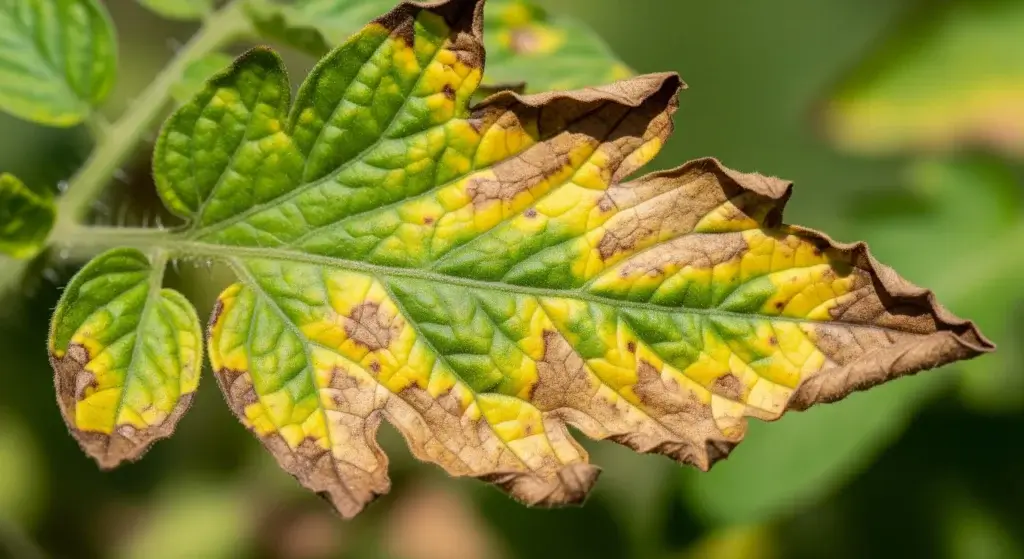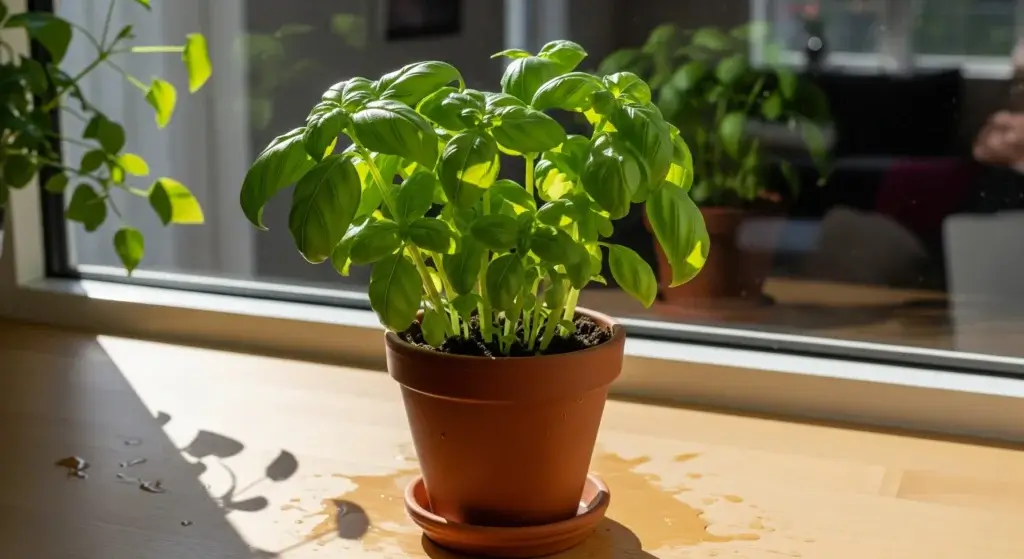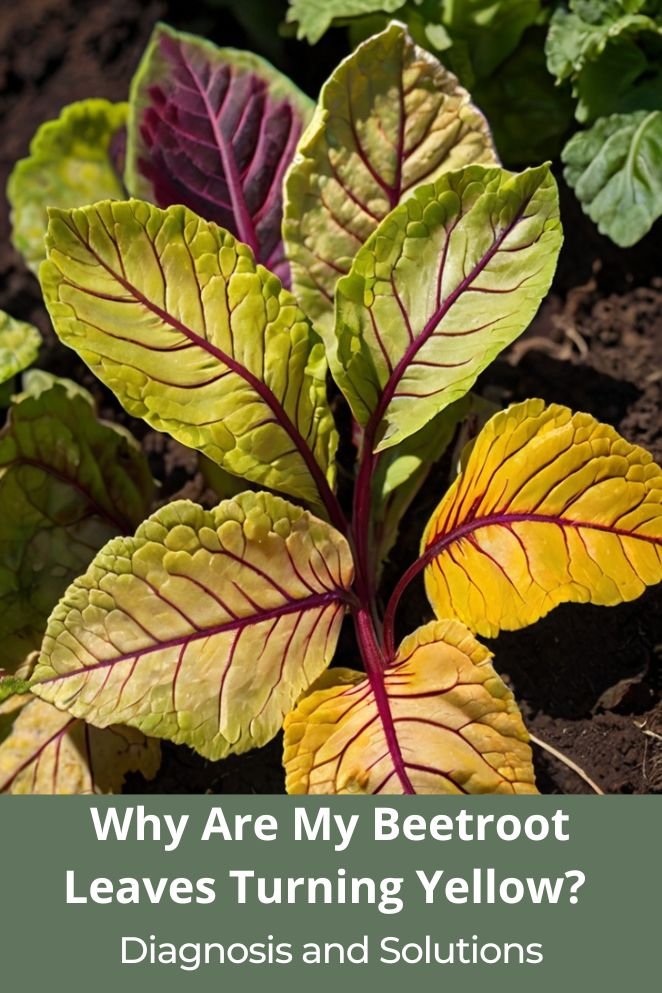
Yellow beet leaves? Don’t panic—it’s a common issue.
Whether it’s age, pests, or disease, something’s off, and your beets are trying to tell you.
This guide breaks down the real reasons behind yellowing beet leaves and how to fix it fast—before your crop pulls a Taylor Swift and ghosts you.
Understanding Normal vs. Problematic Yellowing
Not all yellow beet leaves are a big deal.
Sometimes, it’s just your plant aging—kind of like when your favorite band from middle school breaks up.
The outer, older leaves turn yellow and drop off. That’s normal. The plant is just focusing on growing new leaves.
But if the young leaves are turning yellow? That’s a red flag.
Especially if the yellowing spreads fast or comes with other weird stuff—like droopy leaves, brown spots, or tiny plants that stop growing.
That’s when you need to step in and figure out what’s wrong, fast.
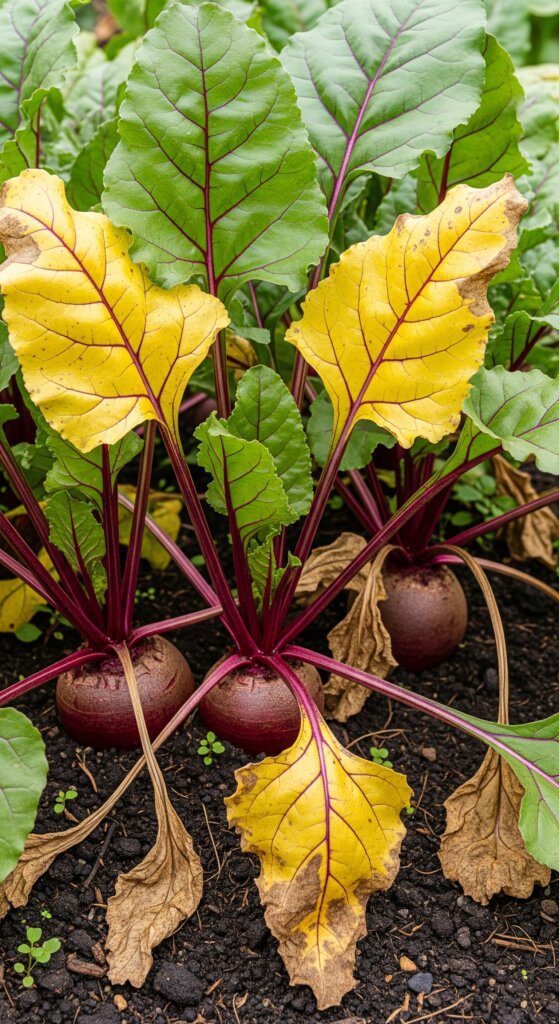
- Read also: Watering Requirements for Beetroot Plants: You Need to Know
- Read also: The Guide to Companion Plants for Beetroot: Maximize Your Garden
Common Causes of Yellow Beetroot Leaves
Let’s break it down. If your beet leaves are going yellow, your plant is either hungry, drowning, sick, or stressed out—basically, it’s having a bad day.
Here are the most common reasons why:
1. Nutrient deficiencies
Your beets need food—just like you can’t skip lunch and expect to ace a test, your plants can’t grow without the right nutrients.
Nitrogen deficiency
Nitrogen helps plants stay green. Without it, older leaves go from green to pale to yellow.
What you’ll see:
- Yellowing starts on lower, older leaves
- Leaves go pale green, then yellow
- Plants grow slow
- Leaves are smaller than usual
Magnesium deficiency
Magnesium helps plants make chlorophyll (the green stuff).
Without it, leaves show weird patterns—yellow between the veins while the veins stay green.
What you’ll see:
- Yellow between the lines of the leaf (interveinal chlorosis)
- Older leaves hit first
- Some red or mottled spots show up
- It gets worse if you ignore it
Potassium deficiency
Potassium keeps your plant strong and disease-resistant.
When it’s low, leaf edges turn yellow or brown like they’re burnt.
What you’ll see:
- Older leaves get crispy, especially at the edges
- Yellowing between veins
- Dead spots show up
2. Overwatering and bad drainage
Your beet roots hate wet feet.
Too much water chokes the roots, and then the whole plant starts to droop and yellow.
Signs of overwatering include:
- Leaves look droopy and yellow
- Roots feel soft or mushy
- Plants stop growing
- You might see white fuzz or mold on the soil
3. Root and crown rot
This one’s serious. It hits the base of the plant and moves fast.
Usually caused by overwatering or bad soil fungi.
Symptoms include:
- Sudden wilting and yellowing
- Black, dry, or rotting parts at the base of the plant
- Roots turn brown and mushy
- Growth stalls out
4. Viral diseases
Just like you can catch a cold, beets can catch viruses—often spread by insects.
One common one is Beet Yellow Stunt.
Common viral symptoms include:
- Leaves have weird yellow spots or patterns
- Leaves curl or look twisted
- Plants stop growing well
- Fewer beets in the end
5. Environmental stress
Too hot, too cold, too little sun—your beets will freak out.
They’ll drop leaves or turn yellow to save energy.
What you’ll see:
- Yellowing with no clear disease or nutrient problem
- Happening after heatwaves or cold snaps
- Plants look like they’re just surviving, not thriving
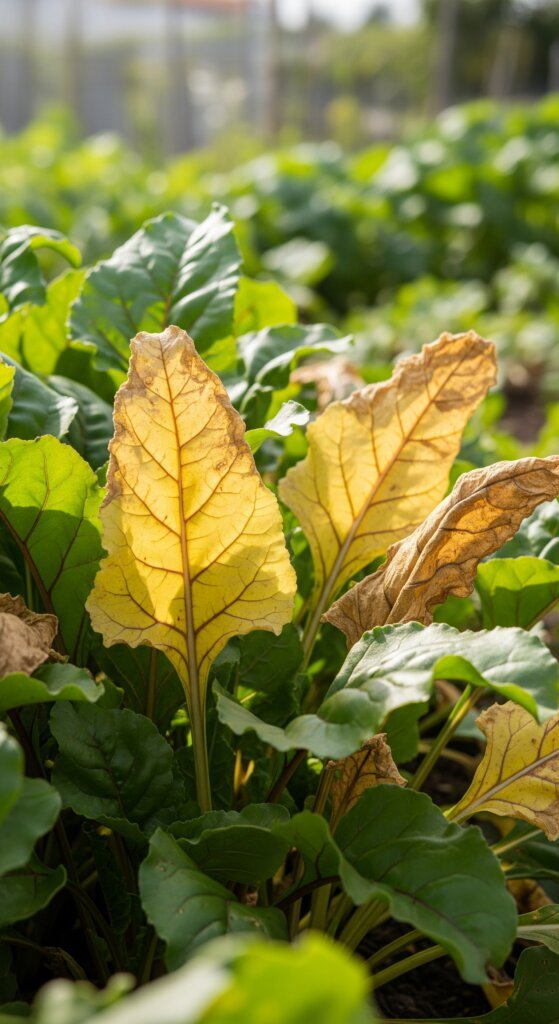
Diagnostic Steps: Identifying the Exact Cause
Before you start throwing fertilizer or blaming bugs, slow down. Let’s do some detective work.
Think of this like solving a mystery—your beets are dropping clues.
Follow these steps to find out what’s really going on.
Step 1:Look at the pattern
Start with the leaves. They’ll tell you where the problem began.
- Are older leaves turning yellow first? That’s probably a nutrient issue like nitrogen or magnesium.
- Are younger leaves affected? Could be disease, virus, or a big stressor.
- Is the yellowing even across the leaf or just between the veins?
- Any spots, drooping, or twisted shapes? That helps narrow it down.
Step 2: Check the soil
Your soil is the foundation. If it’s off, your beets will show it.
- Use a soil pH meter (or test kit). Beets like it between 6.0 and 7.0. Too acidic or too alkaline? Nutrients get locked out.
- Is water pooling or does it drain fast? Beets hate soggy soil.
- Stick your finger in the dirt. If it feels soaked or bone dry, you’ve got a watering issue.
Step 3: Inspect root health
Gently move some soil around the base of your beet plant.
- Are the roots brown, black, or mushy? That’s likely root rot.
- See any white grubs or bugs? You might have a pest chewing away underground.
- Healthy roots should be firm and white—not squishy or smelly.
Step 4: Review care practices
Time to be honest with yourself.
- How often do you water? Too much is just as bad as not enough.
- Did you recently fertilize? Too little or too much can mess things up.
- Are your beets getting at least 6 hours of sun? Are they crammed together with no space to breathe?
Effective Solutions for Yellow Beetroot Leaves
So your beet leaves are yellow. You figured out the cause—now it’s time to fix it.
Here’s exactly what to do, step by step, like you’re patching up your favorite hoodie.
Treating nutrient deficiencies
Low on nitrogen:
- Use a fertilizer with more nitrogen (check the N-P-K label—look for a high first number).
- Add compost or old manure. It’s like a protein shake for your plants.
- Use liquid fertilizer for a fast boost (think of it like an energy drink).
- Keep a regular feeding schedule—don’t ghost your beets.
Low on magnesium:
- Mix 1 tablespoon of Epsom salt in a gallon of water. Water the soil or spray the leaves.
- Use fertilizer that includes magnesium.
- Test your soil pH—if it’s too acidic, magnesium won’t absorb well. Aim for 6.0–7.0.
- Foliar spray = fast fix. It’s the plant version of a quick patch.
Low on potassium:
- Use potash-rich fertilizer or sprinkle a little wood ash (not too much!).
- Add compost to help the soil hold nutrients.
- Make sure your overall fertilizing is balanced—don’t overload on one thing and forget the rest.
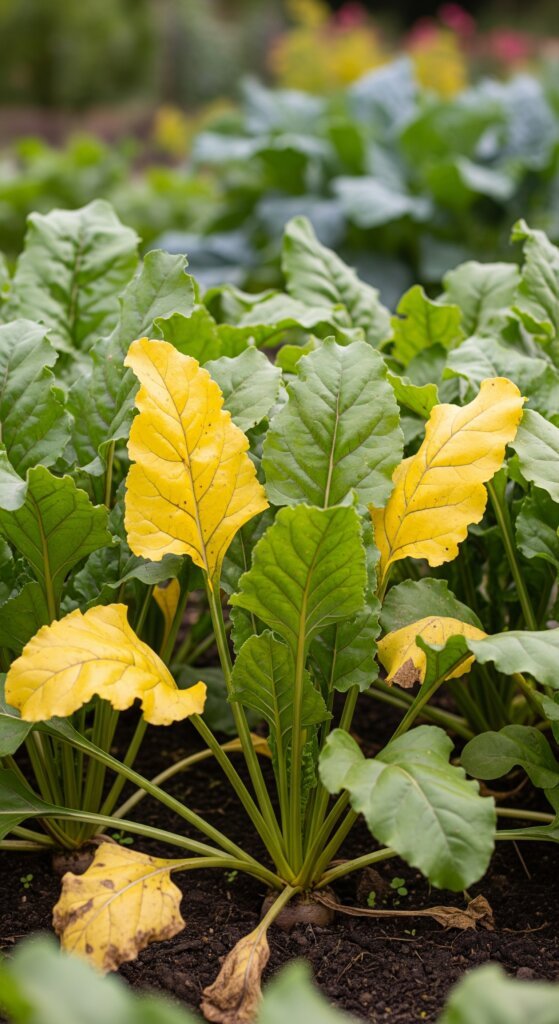
Correcting Watering Issues
For overwatering:
- Stop watering for now.
- Add compost to improve drainage.
- If your area stays wet, try raised beds.
- Don’t water again until the top inch of soil feels dry—like checking if your fries are too soggy.
For underwatering:
- Set a regular watering schedule. Don’t rely on memory—use reminders.
- Add mulch (like straw or shredded leaves) to hold moisture.
- Water deeply—not a little splash. Let it soak the roots.
- Stick your finger in the soil every few days to check if it’s drying out.
Managing diseases
Fungal problems:
- Cut off the sick leaves. Don’t compost them—trash them.
- Space your plants better or thin them to boost air flow.
- If it’s spreading fast, use a fungicide. Go organic if you can.
- Water at the base—not over the top. Wet leaves = happy fungus.
Viral problems:
- Pull and toss infected plants—there’s no cure.
- Control aphids (tiny bugs that spread viruses). Try neem oil or insecticidal soap.
- Next season, choose virus-resistant beet varieties.
- Use crop rotation—don’t plant beets in the same spot every year.
Prevention Strategies
You don’t want to spend the whole season playing plant doctor.
Here’s how to keep your beets healthy from the start—kind of like brushing your teeth so you don’t end up at the dentist.
Soil preparation
Healthy soil = healthy beets. Treat it like your plant’s home base.
- Test your soil before planting. A basic kit will tell you if it needs more nutrients or pH adjustment.
- Add compost once a year. It feeds your soil and helps it hold water—but not too much.
- Make sure water drains well. No one likes soggy roots.
- Keep the pH between 6.0 and 7.0. If it’s way off, your plants can’t absorb nutrients—even if they’re there.
Plant care best practices
Give your beets space and routine checkups—like a regular oil change but for vegetables.
- Space them out so air moves between plants. That helps stop leaf diseases.
- Water at the soil, not over the leaves. Wet leaves invite fungus.
- Fertilize on a schedule, not randomly. Too much is just as bad as too little.
- Check your plants once a week. Look for yellow leaves, bugs, or anything that looks off.
Crop management
- You’re not just growing beets—you’re managing the whole garden system. Stay clean and smart about it.
- Rotate crops every year. Don’t plant beets in the same spot over and over—it builds up pests and disease.
- Use disease-resistant beet varieties if available.
- At the end of the season, clean up all plant debris. Don’t leave rotting leaves in the bed.
- Keep your tools and beds clean. Dirty tools can spread plant problems like a group chat rumor.
When to Seek Professional Help
Sometimes, DIY just won’t cut it. Here’s when you should hit up your local ag extension office or a plant expert:
- Lots of your beet plants look bad, not just one or two
- You’ve tried the usual fixes and nothing’s working
- You think it might be some rare disease you’ve never seen before
- The yellowing is spreading fast, even after you took action
Think of it like calling tech support when your phone keeps glitching—sometimes you need backup.
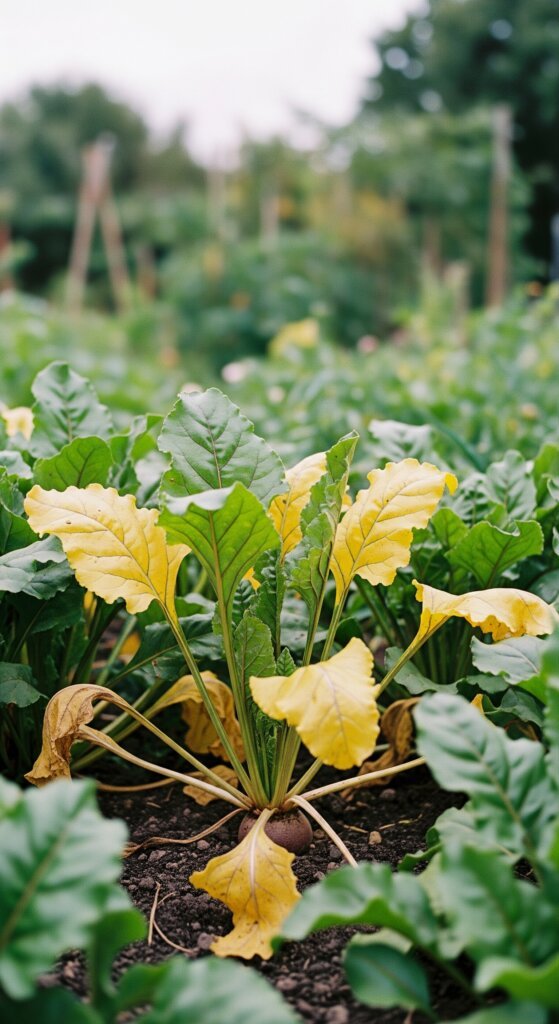
- Read also: Beetroot Diseases and How to Treat Them: A Complete Guide
- Read also: How to Prevent Beetroot Pests Naturally: A Complete Organic Guide
Conclusion: Don’t Let Yellow Leaves Wreck Your Beets
Yellow beet leaves aren’t the end of the world. Catch the problem early, figure out what’s wrong—nutrients, water, disease, stress—and fix it fast.
Start with good soil, water right, feed regularly, and check your plants often.
Most issues are preventable or fixable if you stay on it.
Keep an eye out, act quick, and your beets will bounce back. Healthy roots, happy harvest.


